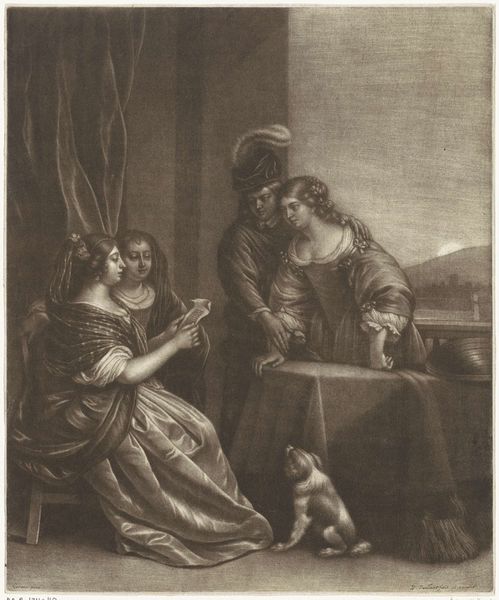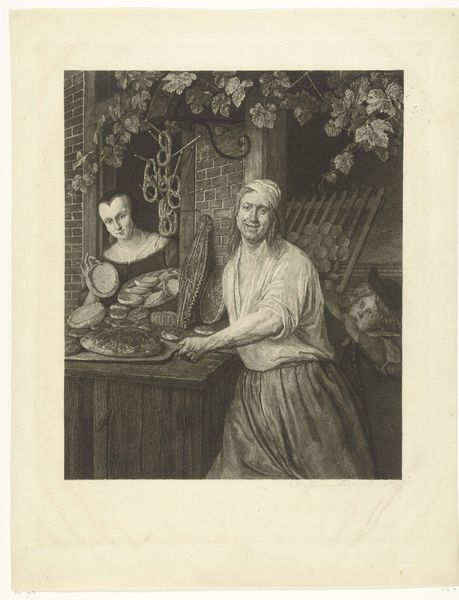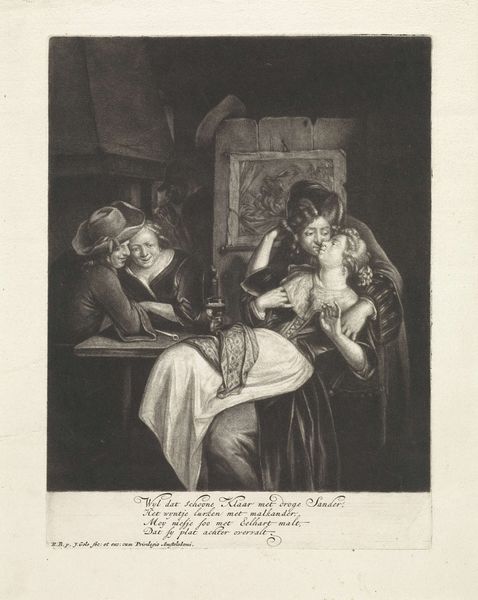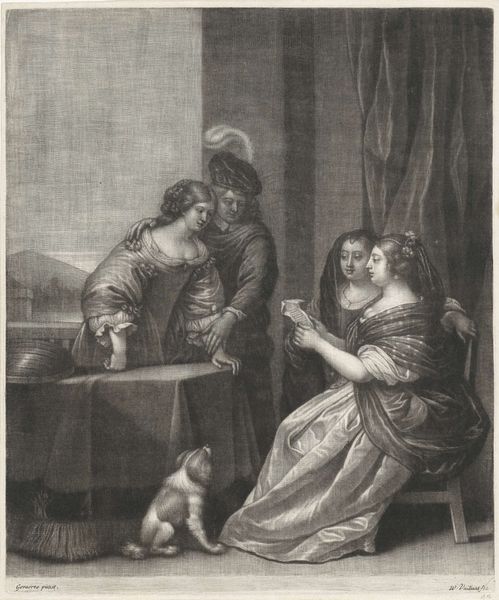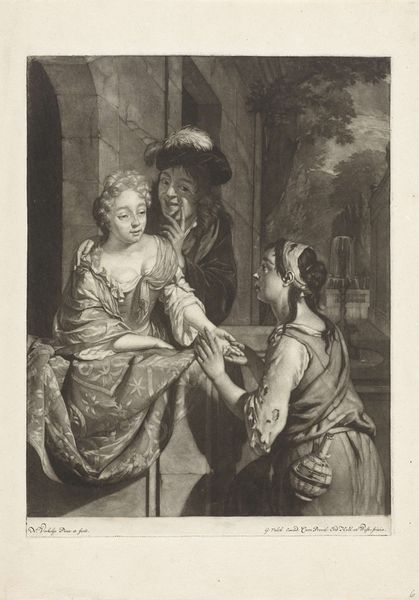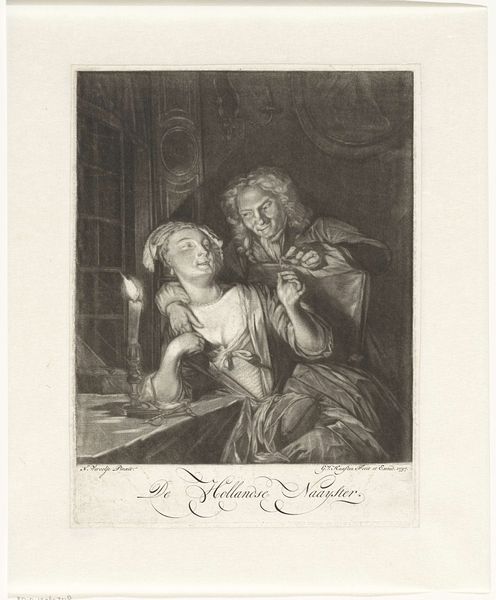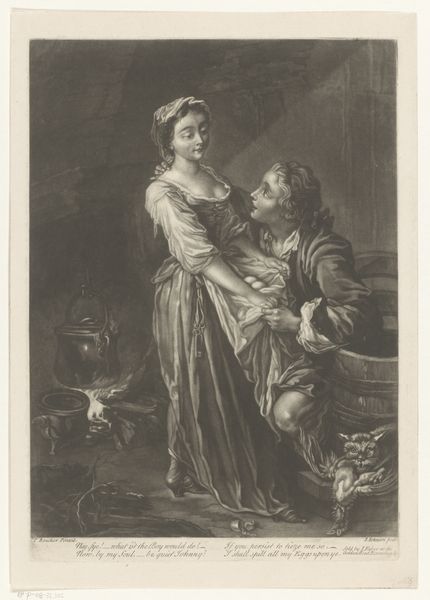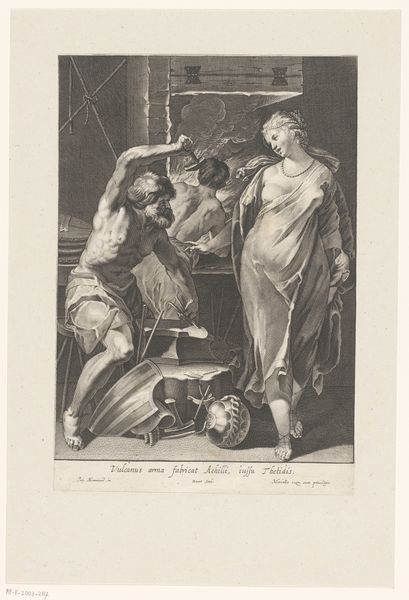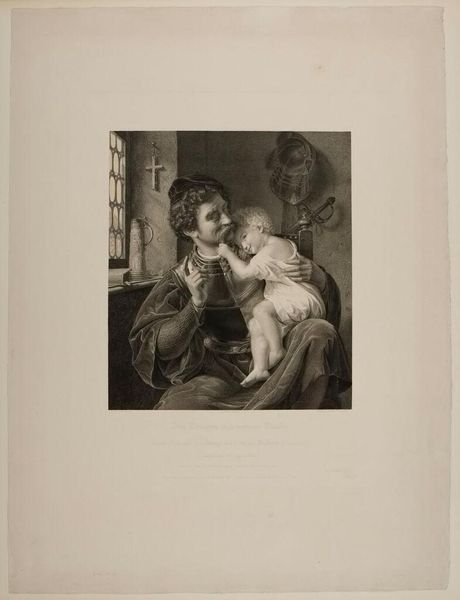
print, engraving
#
portrait
#
baroque
# print
#
charcoal drawing
#
figuration
#
line
#
genre-painting
#
engraving
Dimensions: height 270 mm, width 233 mm
Copyright: Rijks Museum: Open Domain
Editor: Here we have Jan Broedelet’s “Young Woman and Old Man,” an engraving dating somewhere between 1670 and 1700. I'm immediately struck by the contrast between the two figures - a youthful woman and an aging man. What do you make of this pairing? Curator: The pairing certainly draws our attention, doesn't it? The stark contrast in age immediately sparks questions about power dynamics and societal expectations. Engravings like these, produced during the Baroque period, often served as vehicles for commentary on social issues. Considering this through a feminist lens, what assumptions are we invited to make about their relationship and the exchange occurring here? Editor: Well, given the historical context, I’m thinking about themes like arranged marriages and maybe unequal exchanges. Is she willingly giving him her attention? It's hard to tell from her expression. Curator: Precisely! Her gaze is direct but inscrutable, isn't it? The beads dangling from her fingers could symbolize time, wealth, or perhaps a commodity being exchanged. How might we interpret this image as a critique of the patriarchal structures of the time, where women's autonomy was often limited, and their worth was tied to their youth and potential for marriage? Editor: That's a really interesting way to frame it! So, rather than just a depiction of a genre scene, it might actually be challenging those very norms. The fact that it's a print also means it could be distributed more widely, right? Spreading this social critique? Curator: Exactly! Prints were powerful tools for disseminating ideas. This engraving offers a glimpse into the complex negotiations of power, age, and gender during the Baroque era. Perhaps Broedelet intended to spark conversations about the transactional nature of relationships and the limited agency afforded to women within the constraints of 17th-century society. What resonates most with you after looking at it this way? Editor: Definitely how much historical context influences our understanding and the potential for art to be a form of silent protest. It’s far more complex than just a simple portrait! Curator: Indeed, by considering the social and political context, we can unveil layers of meaning within seemingly simple images. It highlights the necessity of critically engaging with the artwork and unraveling dominant ideologies.
Comments
No comments
Be the first to comment and join the conversation on the ultimate creative platform.

